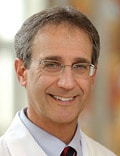ဆံပင္ျဖူျခင္း
အခုေခတ္ ျေပာင္းလဲေနေသာေခတ္နွင့္ ဦးနွောက္ျေခာက္ေသာ ျဖစ္ရပ္မ်ားရဲ့ ေနာက္ဆက္တြဲ ျပႆနာမ်ားက ဆံပင္တြေ ျဖူလာျခင္း ျဖစ္ပါတယ္။ အရြယ္မတိုင္ခင္ ဆံပင္ျဖူလာလို့ စိတ္ညစ္ေနသူမ်ားက OnDoctor မွာ ေမးေလ့ရွိပါတယ္။
အသက္ျကီးလာလို့ ဆံပင္ျဖူလာတာ လူတိုင္း လက္ခံျကပါတယ္။ အသက္ ၃၀ နဲ့ ၂၀ အရြယ္မ်ား ဆံပင္ျဖူလာျခင္းက လူငယ္မ်ားအတြက္ အလြန္စိတ္ညစ္စရာ ျပႆနာတစ္ရပ္ပင္ ျဖစ္ပါတယ္။ ဆံပင္ရဲ့အေရာင္ က်ြတ္၍ ဆံပင္တြေ ျဖူလာတာ ျဖစ္ပါတယ္။ ဆံပင္က်ြတ္ရတဲ့ အျေကာင္းရင္းအတိအက်မသိရေသာ္လည္း ျဖစ္နိုင္ေသာအျေကာင္းရင္းမ်ားမွာ ဆံပင္ဆဲလ္အေဟာင္းမ်ားဖယ္၍ ဆံပင္ဆဲလ္အသစ္မ်ားေပါက္ျခင္းျဖင့္ ဆံပင္မ်ား ရွည္လာပါတယ္။
ဆံပင္ရွည္ရာတြင္ အဆင့္ ၃ ဆင့္ ရွိပါတယ္။ ျကီးထြားမယ္၊ ရပ္မယ္၊ နားမယ္။ ထိုနားတဲ့ အဆင့္တြင္ ဆံပင္က်ြတ္ျပီး အသစ္ေပါက္ပါတယ္။ ဆံပင္အသစ္ထြက္စဉ္ အေရာင္ စုပ္ယူ၍ ကာလာထြက္လာပါတယ္။ အသက္အရြယ္ ျကီးေသာအခါ အေရာင္စုပ္ ယူမွု့မရွိဘဲ ကာလာ မထြက္ေသာျေကာင့္ ဆံပင္ျဖူေပါက္ျခင္း ျဖစ္ပါတယ္။
(၁) မ်ိုးရိုးဗီဇ
မ်ိုးရိုးဗီဇျေကာင့္ ဘယ္အသက္အရြယ္မဆို ဆံပင္ျဖူနိုင္ပါတယ္။ အခ်ို့လူမ်ားအတြက္ အသက္ ၂၀ မတိုင္ခင္ ျဖူတတ္ပါတယ္။ အခ်ို့ကေတာ့ တျေဖးျေဖး ျဖူလာတတ္ပါတယ္။
(၂) မယ္လနင္း/Melanin ေဟာ္မုန္း
လိုအပ္ေသာ အစာအာဟာရနွင့္ အသားဓာတ္မရလ်ွင္ Melanin ေဟာ္မုန္း မထုတ္လုပ္နိုင္ပါ။ အမ်ားစုသည္ melanin ေဟာ္မုန္းခ်ို့တဲ့ေသာျေကာင့္ ဆံပင္ျဖူျကပါတယ္။
(၃) ေဟာ္မုန္း
ဆံပင္ကာလာထြက္ရန္ လိုအပ္ေသာ ေဟာ္မုန္းမ်ား မညီမ်ွလ်ွင္လည္း ဆံပင္ျဖူျကပါတယ္။
(၄) ေရာဂါမ်ား
အခ်ို့ေရာဂါမ်ားသည္ ဆံပင္ကာလာ မရွိျဖစ္ျခင္းကို ျဖစ္ေစပါတယ္။ ဥပမာ Vitamin b12 ခ်ို့တဲ့ျခင္း၊ သိုင္းရြိုက္နွင့္ ပစ္က်ုထရီဂလင္းမ်ားေရာဂါ ျဖစ္ျခင္း
(၅) စိတ္ဖိစီးမွုမ်ားျခင္း
စိတ္ဖိစီးမွု့မ်ားျခင္းက အရြယ္မတိုင္ခင္ ဆံပင္ျဖူျခင္း အဓိက အျေကာင္းရင္းျဖစ္ပါတယ္။ အရက္အလြန္အက်ြံ ေသာက္ျခင္းကလည္း ျဖစ္ေစပါတယ္။
(၆) ဓာတုေဗဒပစ္စည္းမ်ားနွင့္ အျခားေသာအရာမ်ား
ဓာတုေဗဒပစ္စည္းမ်ား ပါဝင္ေသာ ေခါင္းလ်ွော္ရည္၊ ဆပ္ျပာ၊ ဆံပင္ဆိုးေဆးမ်ားျေကာင့္ ဆံပင္ျဖူေစပါတယ္။ ဓာတ္မတည့္မွု့ ျေကာင့္လည္း ျဖစ္နိုင္တယ္။ ဆံပင္ကာလာ ခဏခဏ ျေပာင္း၍ ဆံပင္သည္ ရာသီဥတုဒဏ္၊ ဖုန္တို့ထိတြေ့၍ ဆံပင္ျဖူေစပါတယ္။
ဆံပင္အျမစ္မွ ဟိုက္ဒရိုဂ်င္ပါေအာက္ဆိုဒ္ အနည္းငယ္ ထြက္ပါတယ္။ ထိုအရာက တျေဖးျေဖးစုလာျပီး ဆံပင္အေရာင္ က်ြတ္ေစပါတယ္။ ထိုဓာတ္ကို ဖယ္ျခင္းျဖင့္ သဘာဝအတိုင္း ဆံပင္ကာလာ ျပန္ရရွိပါလိမ့္မယ္။
ဆံပင္မျဖူေအာင္ ကာကြယ္နည္းမ်ား
ဆံပင္ျဖူေစေသာ အျေကာင္းရင္းမ်ားကို ဂရုစိုက္ျခင္းသည္ ဆံပင္မျဖူေအာင္ ကာကြယ္နည္းပင္ ျဖစ္ပါတယ္။ မ်ိုးရိုးဗီဇျေကာင့္က ျေပာင္းလဲမရေပမယ့္ တျခားအရာမ်ားက ကာကြယ္လို့ရပါတယ္။
ေဟာ္မုန္းျဖင့္ကုသျခင္း၊ ေရာဂါမ်ားကုသျခင္းနွင့္ Vitamin b12 ေပးျခင္းတို့ပဲ ျဖစ္ပါတယ္။
ဆံပင္ျဖူျခင္းအတြက္ အိမ္တြင္းကုသနည္းမ်ားမွာ
(၁) ကုလားဆီးျဖူသီး
အျေခာက္လွမ္းထားေသာ ကုလားဆီးျဖူသီးနွင့္ အုန္းဆီဆတူျပုတ္၍ အဆီရည္ျပုလုပ္ပါ။ ထို ေခါင္းလိမ္းဆီကို ဆံပင္အျမစ္မွ အဖ်ားထိ လိမ္း၍ နွိပ္နယ္ေပးပါ။ ၁၅မိနစ္ ဦးေရ နွိပ္နယ္ျပီး မိနစ္ ၃၀ သို့မဟုတ္ တစ္ညအိပ္ပါ။ ေနာက္ေန့တြင္ ေခါင္းလ်ွော္ရည္အပ်ော့ျဖင့္ လ်ွော္ပါ။ တစ္ပတ္ ၂ ျကိမ္ျပုလုပ္ပါ။
ကုလားဆီးျဖူသီးက ပ်က္ဆီးေနေသာ ဆံပင္မ်ား ျပန္လည္သန္စြမ္းကာ ပါဝင္ေသာ Vitamin c သည္အသက္အရြယ္ျေကာင့္ ဆံပင္ျဖူျခင္းကို ကာကြယ္ေပးပါတယ္။ အမွုန့္ျပုလုပ္ကာ မက္မြန္ဆီနဲ့ တြဲလိမ္းလည္း ရပါတယ္။
(၂) ဘလက္ လဘက္ရည္ black tea
ဘလက္လက္ဘက္ရည္ကို အဆူခံ ပြက္လာရင္ အေအးခံျပီး ဆံပင္ကိုလိမ္းပါ။ ဦးေရထိ စိမ့္ဝင္ေအာင္နွိပ္နယ္ပါ။ မိနစ္အနည္းငယ္ အျကာ ေခါင္းလ်ွော္လိုက္ပါ။ တစ္ပတ္ ၂-၃ ျကိမ္ ျပုလုပ္လ်ွင္ ဘလက္လက္ဘက္ရည္မွာပါတဲ့ ဓာတ္တိုးဆန့္က်င္ပစ္စည္းမ်ားျေကာင့္ ဆံပင္ျဖူျခင္း ကာကြယ္ျပီး မည္းနက္ေစပါတယ္။
(၃) အုန္းဆီနွင့္ လိမ္ေမာ္ရည္
လိမ္ေမာ္ရည္နွင့္ အုန္းဆီဆတူေရာ၍ အပူေပးကာ ထိုခပ္နြေးနြေး အဆီကို ေခါင္းမလ်ွော္ခင္ သုတ္လိမ္းေပးပါ။ ျပီးမွ လ်ွော္ပါ။ တစ္ပတ္၂ ျကိမ္ ျပုလုပ္ပါ။
(၄)ျကက္ဆူဆီ
ျကက္ဆူဆီကိုလည္း ေခါင္းမလ်ွော္ခင္ လိမ္းပါက ဆံပင္သန္စြမ္းေစပါတယ္။ ဆံပင္ကာလာ ထိန္းထားနိုင္ပါတယ္။
(၅) ျကက္သြန္နီရည္
ျကက္သြန္နီရည္ကို ဦးေရျပားကို ေခါင္းမလ်ွော္ခင္ မိနစ္ ၃၀ သုတ္ လိမ္းထားလ်ွင္ ဆံပင္မက်ြတ္ျခင္း၊ ဆံပင္သန္စြမ္း မည္းနက္ေစပါတယ္။
(၆) ေကာ္ဖီနွင့္ ဒန္းမွုန့္
ေကာ္ဖီတစ္ခြက္နွင့္ ဒန္းမွုန့္ေရာကာ ဦးေရျပားေပၚ သုတ္လိမ္းေပးျခင္းျဖင့္ ဆံပင္ျဖူျခင္း သက္သာေစပါတယ္။ ၃ ပတ္ တစ္ခါျပုလုပ္ပါ။
(၇) ခဝဲသီး
ခဝဲသီးကို အုန္းဆီထဲတြင္ ေလလုံေအာင္ ၃ ရက္စိမ္ပါ။ ၄ ရက္ျေမာက္ေန့တြင္ အဆိုပါ အုန္းဆီကို မီးအပူေပးကာ ေခါင္းမလ်ွော္ခင္ လိမ္းပါက ဆံပင္အျမစ္ထိ အားျဖည့္သန္စြမ္းကာ ဆံပင္အေရာင္မက်ြတ္ပါ။
(၈) နွမ္းနက္ဆီ
နွမ္းနက္ဆီနွင့္ အုန္းဆီဆတူေရာ၍ ဆံပင္ကိုလိမ္းပါ။ သဘက္ျဖင့္ ဆံပင္ကိုေပါင္းပါ။ ၃၀ မိနစ္အျကာေခါင္းလ်ွော္ပါ။ ဆံပင္အတြက္လိုအပ္ေသာ အက္စစ္ဓာတ္ရရွိကာ Melanin ေဟာ္မုန္း အားေကာင္းေစပါတယ္။ ပုံမွန္သုံးလ်ွင္ ဆံပင္နက္ေစပါတယ္။
အျခားေသာ ဆံပင္ျဖူျခင္း ကင္းေဝးေစေသာ နည္းလမ္းမ်ားမွာ
– vitamin b12 လုံေလာက္စြာ ရရွိေအာင္ စားပါ။ ခ်ို့တဲ့လ်ွင္ သြေးအားနည္းကာ ဆံပင္က်ြတ္ျခင္းနွင့္ဆံပင္ျဖူျခင္း ျဖစ္နိုင္ပါတယ္။
– သိုင္းရြိုက္ဂလင္းတြင္ ေရာဂါရွိ၊ မရွိ စစ္ေဆးပါ။
– ေဆးလိပ္ေသာက္သုံးျခင္းသည္ က်န္းမာေရးထိခိုက္ျပီး ဆံပင္ျဖူေစပါတယ္။ ေဆးလိပ္ျဖတ္ပါ။
– ဓာတ္တိုးဆန့္က်င္ ပစ္စည္းမ်ားပါေသာ အစာအစားမ်ား စားသုံးပါ။ ဥပမာ ဘယ္ရီသီး၊ အျေကးခြံပာေသာငါး၊ အသား၊ ဥနီ၊ ဥအမ်ိုးမ်ိုး၊ ပဲ၊ ေနျကာေစ့ဆံပင္ျဖူေနရာကေန ျပန္လည္၍ အနက္ေရာင္ ျဖစ္ဖို့ရာက မွန္ကန္ေသာ ေရာဂါဇစ္ျမစ္ ရွာဖြေကုသမွု့ ေပၚ မူတည္ပါတယ္။ အသက္အရြယ္နွင့္ မ်ိုးရိုးျေကာင့္ေသာ္လည္း အထက္ပါနည္းမ်ားသုံးလ်ွင္ ဆံပင္မျဖူေအာင္ ထိန္းထားနိုင္ပါတယ္။ အဆိုပါနည္းမ်ားကို ပုံမွန္ျပုလုပ္ေပးပါက ဆံပင္က်ြတ္ျခင္းနွင့္ ျဖူျခင္းကို ထိေရာက္စြာ ကာကြယ္ေပးပါလိမ့္မယ္။
https://ondoctor.com.mm/health-beauty/6512/

အခုေခတ္ ျေပာင္းလဲေနေသာေခတ္နွင့္ ဦးနွောက္ျေခာက္ေသာ ျဖစ္ရပ္မ်ားရဲ့ ေနာက္ဆက္တြဲ ျပႆနာမ်ားက ဆံပင္တြေ ျဖူလာျခင္း ျဖစ္ပါတယ္။ အရြယ္မတိုင္ခင္ ဆံပင္ျဖူလာလို့ စိတ္ညစ္ေနသူမ်ားက OnDoctor မွာ ေမးေလ့ရွိပါတယ္။
အသက္ျကီးလာလို့ ဆံပင္ျဖူလာတာ လူတိုင္း လက္ခံျကပါတယ္။ အသက္ ၃၀ နဲ့ ၂၀ အရြယ္မ်ား ဆံပင္ျဖူလာျခင္းက လူငယ္မ်ားအတြက္ အလြန္စိတ္ညစ္စရာ ျပႆနာတစ္ရပ္ပင္ ျဖစ္ပါတယ္။ ဆံပင္ရဲ့အေရာင္ က်ြတ္၍ ဆံပင္တြေ ျဖူလာတာ ျဖစ္ပါတယ္။ ဆံပင္က်ြတ္ရတဲ့ အျေကာင္းရင္းအတိအက်မသိရေသာ္လည္း ျဖစ္နိုင္ေသာအျေကာင္းရင္းမ်ားမွာ ဆံပင္ဆဲလ္အေဟာင္းမ်ားဖယ္၍ ဆံပင္ဆဲလ္အသစ္မ်ားေပါက္ျခင္းျဖင့္ ဆံပင္မ်ား ရွည္လာပါတယ္။
ဆံပင္ရွည္ရာတြင္ အဆင့္ ၃ ဆင့္ ရွိပါတယ္။ ျကီးထြားမယ္၊ ရပ္မယ္၊ နားမယ္။ ထိုနားတဲ့ အဆင့္တြင္ ဆံပင္က်ြတ္ျပီး အသစ္ေပါက္ပါတယ္။ ဆံပင္အသစ္ထြက္စဉ္ အေရာင္ စုပ္ယူ၍ ကာလာထြက္လာပါတယ္။ အသက္အရြယ္ ျကီးေသာအခါ အေရာင္စုပ္ ယူမွု့မရွိဘဲ ကာလာ မထြက္ေသာျေကာင့္ ဆံပင္ျဖူေပါက္ျခင္း ျဖစ္ပါတယ္။
(၁) မ်ိုးရိုးဗီဇ
မ်ိုးရိုးဗီဇျေကာင့္ ဘယ္အသက္အရြယ္မဆို ဆံပင္ျဖူနိုင္ပါတယ္။ အခ်ို့လူမ်ားအတြက္ အသက္ ၂၀ မတိုင္ခင္ ျဖူတတ္ပါတယ္။ အခ်ို့ကေတာ့ တျေဖးျေဖး ျဖူလာတတ္ပါတယ္။
(၂) မယ္လနင္း/Melanin ေဟာ္မုန္း
လိုအပ္ေသာ အစာအာဟာရနွင့္ အသားဓာတ္မရလ်ွင္ Melanin ေဟာ္မုန္း မထုတ္လုပ္နိုင္ပါ။ အမ်ားစုသည္ melanin ေဟာ္မုန္းခ်ို့တဲ့ေသာျေကာင့္ ဆံပင္ျဖူျကပါတယ္။
(၃) ေဟာ္မုန္း
ဆံပင္ကာလာထြက္ရန္ လိုအပ္ေသာ ေဟာ္မုန္းမ်ား မညီမ်ွလ်ွင္လည္း ဆံပင္ျဖူျကပါတယ္။
(၄) ေရာဂါမ်ား
အခ်ို့ေရာဂါမ်ားသည္ ဆံပင္ကာလာ မရွိျဖစ္ျခင္းကို ျဖစ္ေစပါတယ္။ ဥပမာ Vitamin b12 ခ်ို့တဲ့ျခင္း၊ သိုင္းရြိုက္နွင့္ ပစ္က်ုထရီဂလင္းမ်ားေရာဂါ ျဖစ္ျခင္း
(၅) စိတ္ဖိစီးမွုမ်ားျခင္း
စိတ္ဖိစီးမွု့မ်ားျခင္းက အရြယ္မတိုင္ခင္ ဆံပင္ျဖူျခင္း အဓိက အျေကာင္းရင္းျဖစ္ပါတယ္။ အရက္အလြန္အက်ြံ ေသာက္ျခင္းကလည္း ျဖစ္ေစပါတယ္။
(၆) ဓာတုေဗဒပစ္စည္းမ်ားနွင့္ အျခားေသာအရာမ်ား
ဓာတုေဗဒပစ္စည္းမ်ား ပါဝင္ေသာ ေခါင္းလ်ွော္ရည္၊ ဆပ္ျပာ၊ ဆံပင္ဆိုးေဆးမ်ားျေကာင့္ ဆံပင္ျဖူေစပါတယ္။ ဓာတ္မတည့္မွု့ ျေကာင့္လည္း ျဖစ္နိုင္တယ္။ ဆံပင္ကာလာ ခဏခဏ ျေပာင္း၍ ဆံပင္သည္ ရာသီဥတုဒဏ္၊ ဖုန္တို့ထိတြေ့၍ ဆံပင္ျဖူေစပါတယ္။
ဆံပင္အျမစ္မွ ဟိုက္ဒရိုဂ်င္ပါေအာက္ဆိုဒ္ အနည္းငယ္ ထြက္ပါတယ္။ ထိုအရာက တျေဖးျေဖးစုလာျပီး ဆံပင္အေရာင္ က်ြတ္ေစပါတယ္။ ထိုဓာတ္ကို ဖယ္ျခင္းျဖင့္ သဘာဝအတိုင္း ဆံပင္ကာလာ ျပန္ရရွိပါလိမ့္မယ္။
ဆံပင္မျဖူေအာင္ ကာကြယ္နည္းမ်ား
ဆံပင္ျဖူေစေသာ အျေကာင္းရင္းမ်ားကို ဂရုစိုက္ျခင္းသည္ ဆံပင္မျဖူေအာင္ ကာကြယ္နည္းပင္ ျဖစ္ပါတယ္။ မ်ိုးရိုးဗီဇျေကာင့္က ျေပာင္းလဲမရေပမယ့္ တျခားအရာမ်ားက ကာကြယ္လို့ရပါတယ္။
ေဟာ္မုန္းျဖင့္ကုသျခင္း၊ ေရာဂါမ်ားကုသျခင္းနွင့္ Vitamin b12 ေပးျခင္းတို့ပဲ ျဖစ္ပါတယ္။
ဆံပင္ျဖူျခင္းအတြက္ အိမ္တြင္းကုသနည္းမ်ားမွာ
(၁) ကုလားဆီးျဖူသီး
အျေခာက္လွမ္းထားေသာ ကုလားဆီးျဖူသီးနွင့္ အုန္းဆီဆတူျပုတ္၍ အဆီရည္ျပုလုပ္ပါ။ ထို ေခါင္းလိမ္းဆီကို ဆံပင္အျမစ္မွ အဖ်ားထိ လိမ္း၍ နွိပ္နယ္ေပးပါ။ ၁၅မိနစ္ ဦးေရ နွိပ္နယ္ျပီး မိနစ္ ၃၀ သို့မဟုတ္ တစ္ညအိပ္ပါ။ ေနာက္ေန့တြင္ ေခါင္းလ်ွော္ရည္အပ်ော့ျဖင့္ လ်ွော္ပါ။ တစ္ပတ္ ၂ ျကိမ္ျပုလုပ္ပါ။
ကုလားဆီးျဖူသီးက ပ်က္ဆီးေနေသာ ဆံပင္မ်ား ျပန္လည္သန္စြမ္းကာ ပါဝင္ေသာ Vitamin c သည္အသက္အရြယ္ျေကာင့္ ဆံပင္ျဖူျခင္းကို ကာကြယ္ေပးပါတယ္။ အမွုန့္ျပုလုပ္ကာ မက္မြန္ဆီနဲ့ တြဲလိမ္းလည္း ရပါတယ္။
(၂) ဘလက္ လဘက္ရည္ black tea
ဘလက္လက္ဘက္ရည္ကို အဆူခံ ပြက္လာရင္ အေအးခံျပီး ဆံပင္ကိုလိမ္းပါ။ ဦးေရထိ စိမ့္ဝင္ေအာင္နွိပ္နယ္ပါ။ မိနစ္အနည္းငယ္ အျကာ ေခါင္းလ်ွော္လိုက္ပါ။ တစ္ပတ္ ၂-၃ ျကိမ္ ျပုလုပ္လ်ွင္ ဘလက္လက္ဘက္ရည္မွာပါတဲ့ ဓာတ္တိုးဆန့္က်င္ပစ္စည္းမ်ားျေကာင့္ ဆံပင္ျဖူျခင္း ကာကြယ္ျပီး မည္းနက္ေစပါတယ္။
(၃) အုန္းဆီနွင့္ လိမ္ေမာ္ရည္
လိမ္ေမာ္ရည္နွင့္ အုန္းဆီဆတူေရာ၍ အပူေပးကာ ထိုခပ္နြေးနြေး အဆီကို ေခါင္းမလ်ွော္ခင္ သုတ္လိမ္းေပးပါ။ ျပီးမွ လ်ွော္ပါ။ တစ္ပတ္၂ ျကိမ္ ျပုလုပ္ပါ။
(၄)ျကက္ဆူဆီ
ျကက္ဆူဆီကိုလည္း ေခါင္းမလ်ွော္ခင္ လိမ္းပါက ဆံပင္သန္စြမ္းေစပါတယ္။ ဆံပင္ကာလာ ထိန္းထားနိုင္ပါတယ္။
(၅) ျကက္သြန္နီရည္
ျကက္သြန္နီရည္ကို ဦးေရျပားကို ေခါင္းမလ်ွော္ခင္ မိနစ္ ၃၀ သုတ္ လိမ္းထားလ်ွင္ ဆံပင္မက်ြတ္ျခင္း၊ ဆံပင္သန္စြမ္း မည္းနက္ေစပါတယ္။
(၆) ေကာ္ဖီနွင့္ ဒန္းမွုန့္
ေကာ္ဖီတစ္ခြက္နွင့္ ဒန္းမွုန့္ေရာကာ ဦးေရျပားေပၚ သုတ္လိမ္းေပးျခင္းျဖင့္ ဆံပင္ျဖူျခင္း သက္သာေစပါတယ္။ ၃ ပတ္ တစ္ခါျပုလုပ္ပါ။
(၇) ခဝဲသီး
ခဝဲသီးကို အုန္းဆီထဲတြင္ ေလလုံေအာင္ ၃ ရက္စိမ္ပါ။ ၄ ရက္ျေမာက္ေန့တြင္ အဆိုပါ အုန္းဆီကို မီးအပူေပးကာ ေခါင္းမလ်ွော္ခင္ လိမ္းပါက ဆံပင္အျမစ္ထိ အားျဖည့္သန္စြမ္းကာ ဆံပင္အေရာင္မက်ြတ္ပါ။
(၈) နွမ္းနက္ဆီ
နွမ္းနက္ဆီနွင့္ အုန္းဆီဆတူေရာ၍ ဆံပင္ကိုလိမ္းပါ။ သဘက္ျဖင့္ ဆံပင္ကိုေပါင္းပါ။ ၃၀ မိနစ္အျကာေခါင္းလ်ွော္ပါ။ ဆံပင္အတြက္လိုအပ္ေသာ အက္စစ္ဓာတ္ရရွိကာ Melanin ေဟာ္မုန္း အားေကာင္းေစပါတယ္။ ပုံမွန္သုံးလ်ွင္ ဆံပင္နက္ေစပါတယ္။
အျခားေသာ ဆံပင္ျဖူျခင္း ကင္းေဝးေစေသာ နည္းလမ္းမ်ားမွာ
– vitamin b12 လုံေလာက္စြာ ရရွိေအာင္ စားပါ။ ခ်ို့တဲ့လ်ွင္ သြေးအားနည္းကာ ဆံပင္က်ြတ္ျခင္းနွင့္ဆံပင္ျဖူျခင္း ျဖစ္နိုင္ပါတယ္။
– သိုင္းရြိုက္ဂလင္းတြင္ ေရာဂါရွိ၊ မရွိ စစ္ေဆးပါ။
– ေဆးလိပ္ေသာက္သုံးျခင္းသည္ က်န္းမာေရးထိခိုက္ျပီး ဆံပင္ျဖူေစပါတယ္။ ေဆးလိပ္ျဖတ္ပါ။
– ဓာတ္တိုးဆန့္က်င္ ပစ္စည္းမ်ားပါေသာ အစာအစားမ်ား စားသုံးပါ။ ဥပမာ ဘယ္ရီသီး၊ အျေကးခြံပာေသာငါး၊ အသား၊ ဥနီ၊ ဥအမ်ိုးမ်ိုး၊ ပဲ၊ ေနျကာေစ့ဆံပင္ျဖူေနရာကေန ျပန္လည္၍ အနက္ေရာင္ ျဖစ္ဖို့ရာက မွန္ကန္ေသာ ေရာဂါဇစ္ျမစ္ ရွာဖြေကုသမွု့ ေပၚ မူတည္ပါတယ္။ အသက္အရြယ္နွင့္ မ်ိုးရိုးျေကာင့္ေသာ္လည္း အထက္ပါနည္းမ်ားသုံးလ်ွင္ ဆံပင္မျဖူေအာင္ ထိန္းထားနိုင္ပါတယ္။ အဆိုပါနည္းမ်ားကို ပုံမွန္ျပုလုပ္ေပးပါက ဆံပင္က်ြတ္ျခင္းနွင့္ ျဖူျခင္းကို ထိေရာက္စြာ ကာကြယ္ေပးပါလိမ့္မယ္။
https://ondoctor.com.mm/health-beauty/6512/













 e-Cigarettes Linked to Increased Stroke, MI Risk
e-Cigarettes Linked to Increased Stroke, MI Risk
